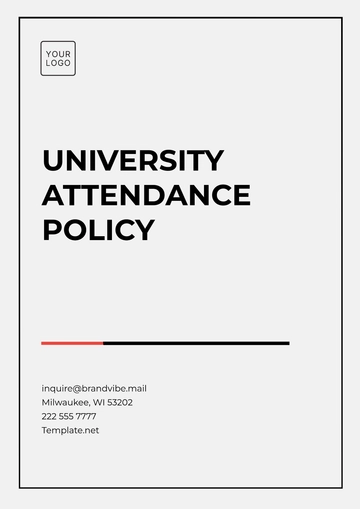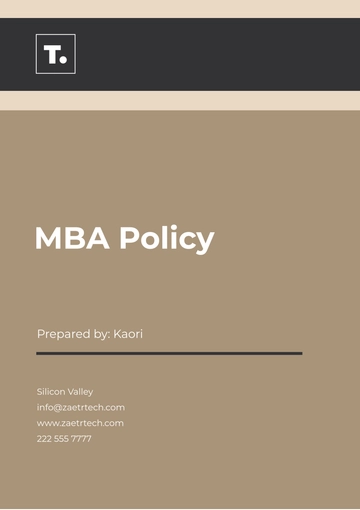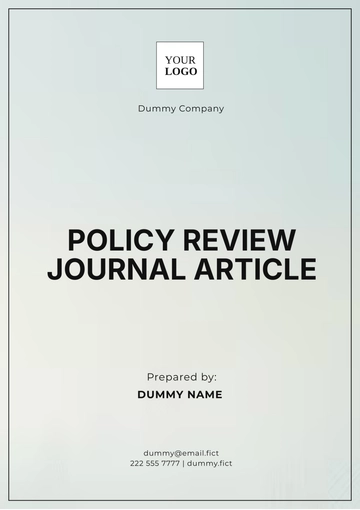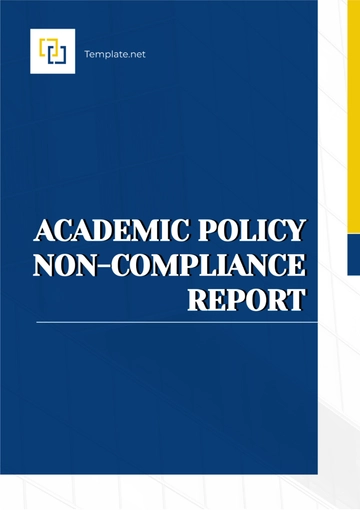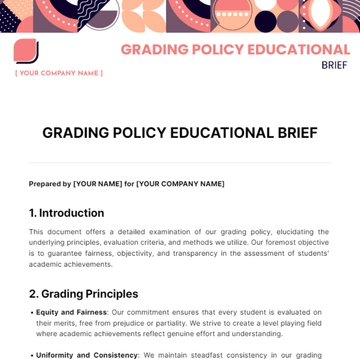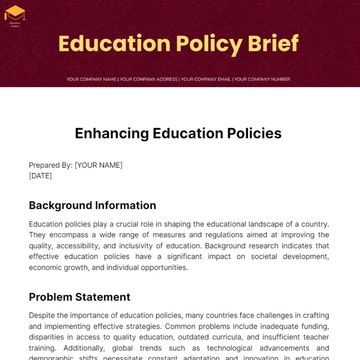Free Grading Policy Educational Brief
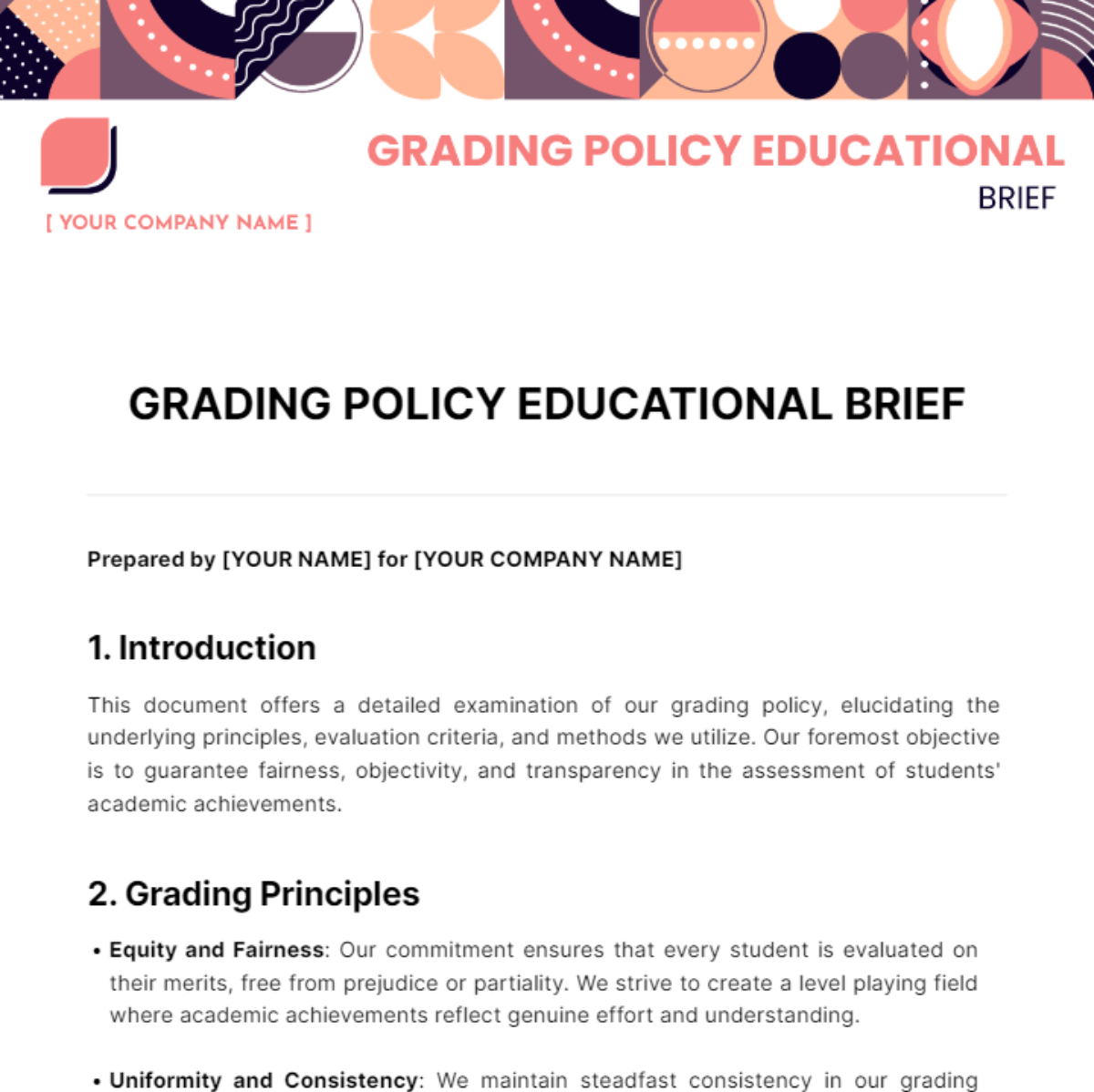
Prepared by [YOUR NAME] for [YOUR COMPANY NAME]
1. Introduction
This document offers a detailed examination of our grading policy, elucidating the underlying principles, evaluation criteria, and methods we utilize. Our foremost objective is to guarantee fairness, objectivity, and transparency in the assessment of students' academic achievements.
2. Grading Principles
Equity and Fairness: Our commitment ensures that every student is evaluated on their merits, free from prejudice or partiality. We strive to create a level playing field where academic achievements reflect genuine effort and understanding.
Uniformity and Consistency: We maintain steadfast consistency in our grading criteria across all courses and academic levels. This uniform approach ensures that every student's work is assessed against the same standards, fostering a sense of fairness and reliability in our evaluation processes.
Clarity and Transparency: We prioritize clear communication of our grading policies and scales to all students at the onset of each academic year or course. This practice is fundamental in setting accurate expectations and providing students with the knowledge they need to succeed.
Integrity and Robustness: Our grading system is designed to be robust, capable of withstanding rigorous scrutiny, and upholding the highest standards of academic integrity. We ensure that our methods are sound, defensible, and aligned with educational best practices.
Diversity and Inclusivity: Recognizing the diverse learning styles and needs of our student body, our grading system is crafted to be inclusive. We endeavor to accommodate and support varied approaches to learning, ensuring that all students have the opportunity to demonstrate their knowledge and skills effectively.
3. Grading Criteria
This table outlines the grading structure for assessing student performance, breaking down the components into five key categories: Assignments, Class Participation, Quizzes, Midterm Exams, and Final Exam. Each category is assigned a specific weightage, contributing to a cumulative 100% of a student's grade. This breakdown ensures a comprehensive evaluation of students' academic engagement and achievement throughout the course.
Assessment Category | Description | Weightage (%) |
|---|---|---|
Assignments | Includes homework, projects, and lab work | 30 |
Class Participation | Includes classroom engagement, discussions, and attendance | 20 |
Quizzes | Includes both surprise and scheduled quizzes | 10 |
Midterm Exam | Includes written and practical exams | 20 |
Final Exam | Includes written and practical exams | 20 |
Total | 100% |
4. Grading Methods
This section details five grading methods utilized to assess student performance: Letter Grade, Numerical Scale, Pass/Fail, Portfolio Assessment, and Peer Assessment. Each method offers a unique approach to evaluating academic achievement, from traditional grading systems to more holistic and interactive assessments.
Letter Grade System: This method segments student performance into distinct categories, such as A, B, C, etc., each reflecting a range of achievement levels. It allows for a clear and structured representation of academic standing, facilitating easy comprehension of a student's performance relative to course expectations.
Numerical Scale Evaluation: This approach quantifies student performance on a continuum from 0 to 100, offering precise measurement of achievements and areas for improvement. It provides detailed feedback, enabling students to pinpoint their strengths and weaknesses with specific numerical values.
Pass/Fail Assessment: Simplifies the evaluation process to a binary outcome, where students either meet the minimum competency criteria (Pass) or do not (Fail). This method reduces the pressure of numerical or letter grades, focusing instead on fundamental understanding and competency in the subject matter.
Portfolio Assessment: This comprehensive method evaluates a student's growth and learning trajectory over a period through a collection of work samples. It offers a holistic view of a student's progress, creativity, and skill development, beyond traditional testing formats.
Peer Assessment: This interactive approach allows students to engage in the evaluation process by assessing each other's work. It encourages critical thinking, fosters a collaborative learning environment, and provides diverse perspectives on performance and areas for improvement.
5. Revision and Feedback
Under our grading policy, students are empowered to seek feedback and review their graded work, affirming our commitment to their understanding and academic growth. We encourage students to engage actively in this process to clarify any uncertainties and enhance their learning experience. Moreover, students have the opportunity to request a revision of their grades within one week after the grades have been released, provided they present valid reasons for their appeal.
This policy is crafted to bolster students' educational journey and accomplishments. Our educators are devoted to applying this policy uniformly, prioritizing the students' educational welfare at every step.
- 100% Customizable, free editor
- Access 1 Million+ Templates, photo’s & graphics
- Download or share as a template
- Click and replace photos, graphics, text, backgrounds
- Resize, crop, AI write & more
- Access advanced editor
Optimize educational assessment with Template.net's Grading Policy Educational Brief. This essential, fully editable, and customizable template establishes transparent grading criteria, fostering fair and consistent evaluation across educational institutions. Designed for ease of use in our AI Editor Tool, it allows educators to tailor assessment standards to their specific needs, ensuring academic integrity and student success.
You may also like
- HR Policy
- Restaurant Policy
- Company Policy
- Accounting Policies and Procedures
- Website Policy
- Privacy Policy
- Safety Policy
- School Policy
- IT and Software Policy
- Law Firm Policy
- Construction Policy
- Interior Design Policy
- Travel Agency Policy
- Education Academic Policy
- Security Policy
- Real Estate Policy
- Expense Policy
- Software Policy
